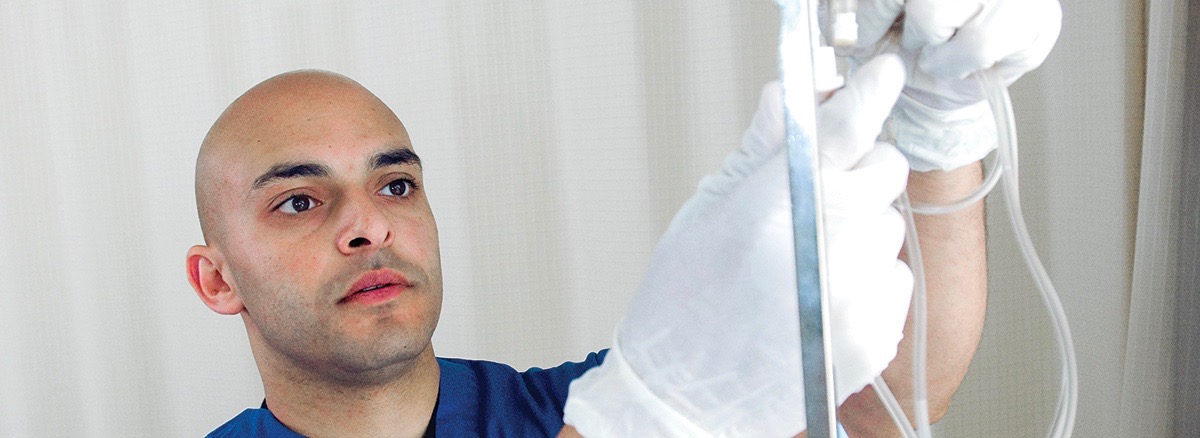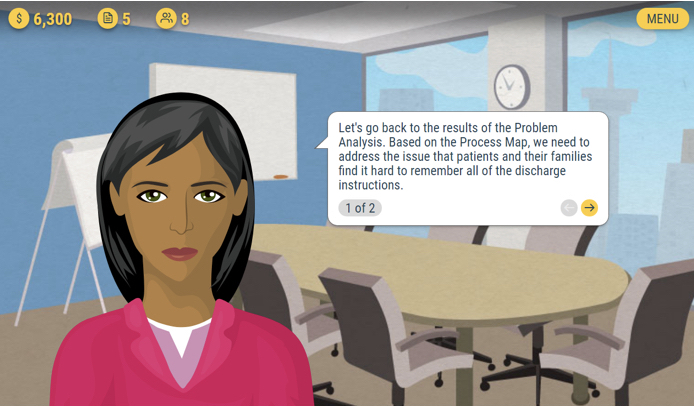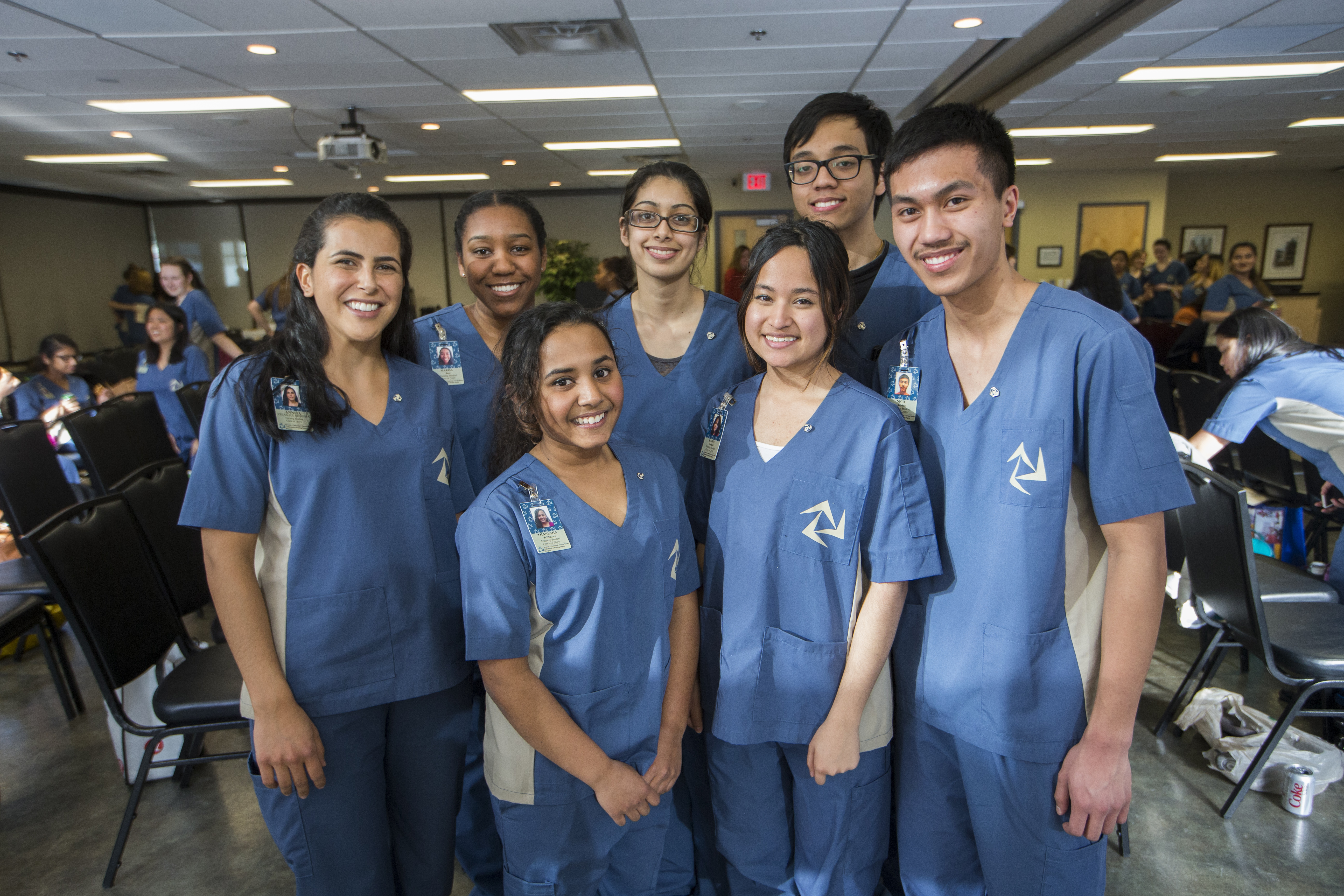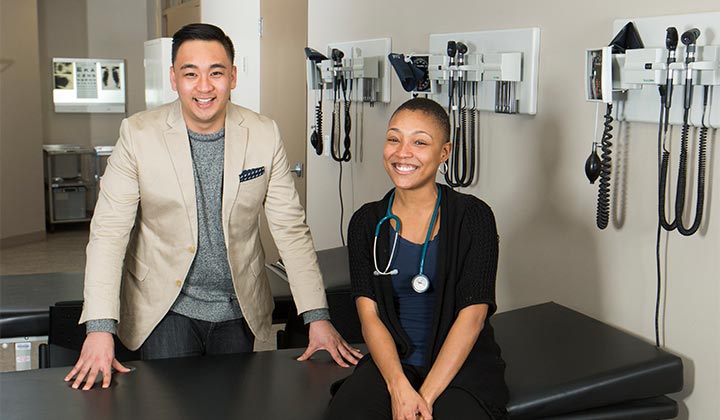
Designing smarter healthcare: Turning nurses’ ideas into process improvements
Ontario nurses lead the way. eCampusOntario funded a Ryerson University project that combines nursing expertise and industrial engineering to create “serious games” that lower training costs and create better value and student outcomes.
Better work, better care
New curriculum and “serious games” are training Ontario nurses to lead process improvements at work. Nancy Purdy, from Ryerson University’s School of Nursing, and Patrick Neumann, from the Human Factors Engineering Lab, explain how.
Nancy Purdy: My research is all about promoting healthy work environments. I’m trying to show the connection between quality work environments for nurses and the quality of patient care.
When organizations engage in process improvements, they should look at important things like efficiency and quality — but also look at the quality of the work environment. I realized there needs to be some training for nurses in how to participate in that process.
So when eCampusOntario announced their funding call, we thought: let’s develop something for undergraduate nurses, to give them the knowledge base that they need.
It’s such an important skill-set. I started reading more about how it’s missing from the curriculum, and how important it is for nurses to have a foundation in these basic skills.

A screenshot from the simulation game.
Serious games
Nancy: We’re using a “simulation game” or “serious game” to help teach this material. We hadn’t done that before, and we thought it could really inform our own practice and development as educators.
Patrick Neumann: We’re looking at simulating healthcare systems. In the simulation game, a clinician is leading a process improvement project. So they get to apply everything that they’ve learned in the modules.

Nursing students learning practical skills in a classroom.
“We need to ensure people in the frontlines of healthcare have the knowledge they need to participate in process improvement.”
Combining nursing expertise + industrial engineering
Patrick: Most of my work focuses on the human in the system. We need to engage front-line employees directly in the improvement process. That way their views, their understanding of what’s easy and what’s hard, can get taken in. We need to ensure people in the frontlines of healthcare have the knowledge they need to fully participate in process improvement.
“Most of my work focuses on the human in the system.”
We’re trying to bridge the gap between how engineers think and how people within healthcare think. So we paired people from healthcare directly with engineers, for better collaboration with the people actually using their designs.

A group of Ryerson University nursing students.
Making textbook learning more relevant
Nancy: Students told us they really appreciated the real-life aspects and examples in the serious game. They make textbook learning a lot more realistic. We used evidence-based examples, case reports, and specific examples from Ontario to make it as current and as relevant as possible, pulling from acute care to long term care to community care.
“We used evidence-based examples, case reports, and specific examples from Ontario to make it as current and as relevant as possible.”
Open = lower costs + better value
Nancy: The students also said they prefer the use of audio and video clips, particularly when dealing with abstract concepts. Multimedia breaks up the text-based work they have to do.
Open textbooks can include these new elements, like videos and ways to test yourself, that improve outcomes for students. Instead of just rote learning, you really get to see the application side.
And when you look at the financial pressures students face, we can start using more open educational materials that don’t cost students any money. And they don’t need to carry it in their backpack on the Go Train.

Open educational materials — particularly textbooks in this case — are free to students, easy to access and transport, and can include multimedia elements that test skills and improve learning outcomes.
The human factor
Patrick: The whole idea here is process improvement. If you think about how most hospitals improve themselves today, you’ve often got one team looking at quality, another one looking at accidents, another team looking at costs, and another trying to improve safety — all operating without coordination. This kind of training helps close that gap.
“We want to produce teams that can tackle quality, cost and safety — for the caregiver as well as the patient — all in one improvement process. Because in the end you just have one hospital.”
We want to produce teams that can tackle quality, cost and safety — for the caregiver as well as the patient — all in one improvement process. Because in the end you only have one hospital, not three. This training sets the bedrock for doing that integrated improvement effort.

Two students in an examination room.
Ontario innovation
Nancy: When we started, we only had a few examples of other learning simulations and games out there. It takes significant resources to develop this work, because you’re pulling from so many different areas and experts. I link that to the importance of eCampusOntario, because without that funding, we could never have done this.
The funding was such a good catalyst. Once we start marketing the training more broadly to other schools, it think it will get picked up even more. We never could have done it without eCampusOntario.
This is really just to say how vital we think the organization is, and the funding associated with it, in making education truly accessible — and improving practice once people are graduated into work.
Bios

Patrick Neumann is Professor in the Department of Mechanical and Industrial Engineering at Ryerson University. (LinkedIn)

Nancy Purdy is Associate Professor at the Daphne Cockwell School of Nursing. (Twitter | LinkedIn)
